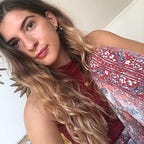The Key to Finding Yourself is to Stop Searching
Three Steps to Stop Questioning Who You Are, And Start Being Them
4 min readNov 24, 2020
I’m in the ‘limbo’ years in life. I’m neither here nor there, I’m split between two cities, university, a part-time job, and freelancing, and my friends are suddenly spread out around the country.
